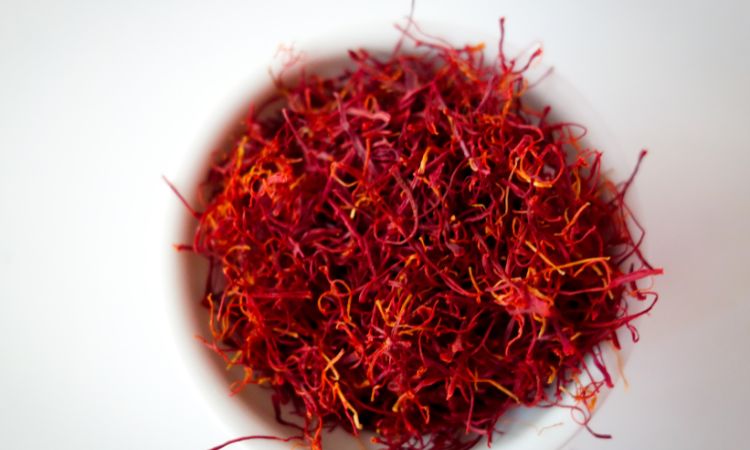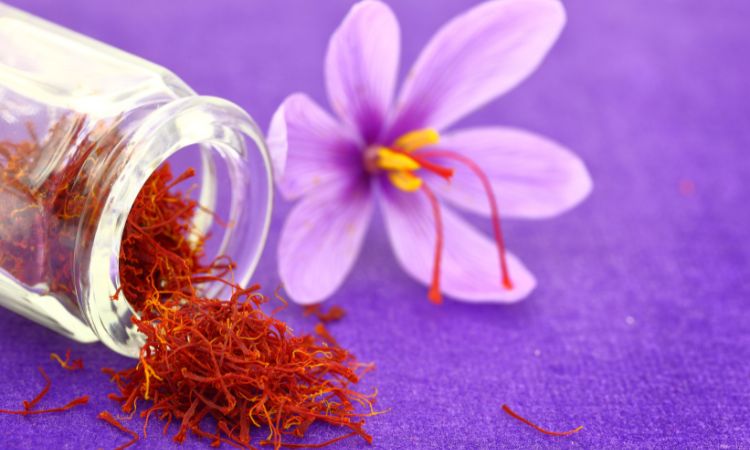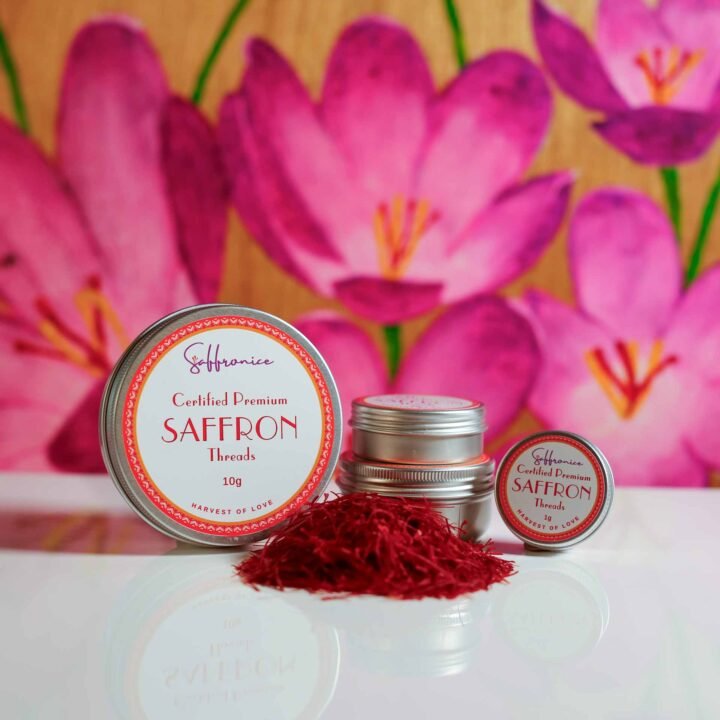📌 Quick Answer: Saffron trade history spans over 3,500 years, beginning with Bronze Age cultivation in ancient Greece around 1600-1500 BCE. The spice spread through Persian Empire trade routes, Roman commerce networks, and the Silk Road, becoming more valuable than gold. Major trading centers included Isfahan, Constantinople, and Mediterranean ports, with saffron influencing cuisine, medicine, religion, and art across civilizations.
Ancient Origins and Early Cultivation
Understanding what saffron is requires exploring its remarkable journey from wild flower to global commodity. The history and origins of saffron reveal how human ingenuity transformed a simple crocus into the world’s most expensive spice through millennia of careful cultivation and trade.
Bronze Age Beginnings in Ancient Greece
Archaeological evidence places saffron’s first systematic cultivation in the Minoan civilization of Crete around 1600-1500 BCE. The famous Akrotiri frescoes on Santorini provide the earliest visual documentation of saffron harvesting, depicting women carefully gathering the precious stigmas in elaborate ceremonial contexts.
Early Cultivation Evidence:
- Minoan palace frescoes showing detailed harvest scenes
- Archaeological residues confirming ancient saffron processing
- Bronze Age pottery decorated with crocus motifs
- Ancient burial goods, including saffron-dyed textiles
- Cave paintings in northwestern Iran date back 50,000 years
Domestication from Wild Ancestors
The transformation from wild Crocus cartwrightianus to cultivated Crocus sativus represents one of humanity’s earliest examples of deliberate plant breeding for commercial purposes. This process required a sophisticated understanding of plant genetics and careful selection over generations.
Domestication Process:
- Wild Ancestor: Crocus cartwrightianus, native to Greece and Southwest Asia
- Selective Breeding: Focusing on plants with longer, more abundant stigmas
- Genetic Changes: Development of triploid plants requiring human intervention
- Cultivation Spread: Gradual expansion from the Greek islands to mainland regions
- Quality Improvement: Continuous selection for color, aroma, and flavor intensity
Understanding saffron cultivation reveals how ancient farmers overcame significant challenges to establish sustainable production systems that continue influencing modern agricultural practices.

Early Trade Networks and Value Recognition
Even in Bronze Age societies, saffron commanded extraordinary prices that reflected both its labor-intensive production and unique properties. Ancient records suggest saffron was often traded at values exceeding gold, establishing patterns that persist today.
Value Indicators:
- Royal burial goods, including saffron-dyed garments
- Palace inventories listing saffron among precious materials
- Trade documents showing exchange rates with precious metals
- Religious texts describing saffron as a divine substance
- Military records documenting saffron as a valuable war prize
Trade Historian’s Note: The consistency of saffron’s high valuation across diverse ancient civilizations suggests genuine recognition of its unique properties rather than mere cultural fashion or superstition.
Cultural Significance in Early Civilizations
The spread of saffron through ancient trade networks facilitated profound cultural exchange that extended far beyond commercial transactions. This precious spice became integral to religious practices, artistic expression, and social hierarchies across multiple civilizations.
Ancient Greek Cultural Integration
Greek civilization elevated saffron from an agricultural commodity to a cultural symbol, integrating it into mythology, medicine, and daily life in ways that influenced subsequent civilizations throughout the Mediterranean world.
Greek Cultural Applications:
- Mythological Significance: Stories of Crocus and Smilax explaining the flower’s origins
- Religious Practices: Temple offerings and goddess worship ceremonies
- Medical Traditions: Hippocratic medicine incorporating saffron treatments
- Artistic Expression: Pottery, textiles, and architectural decorations featuring crocus motifs
- Social Distinctions: Use of saffron indicates wealth and social status
Understanding cultural significance reveals how the spice transcended mere culinary applications to become a marker of civilization and cultural sophistication.
Egyptian Royal Traditions
Ancient Egypt’s fascination with saffron reflected the civilization’s sophisticated understanding of luxury goods, preservation techniques, and international trade. Egyptian applications of saffron influenced practices throughout the ancient world.
Egyptian Applications:
- Cleopatra’s Beauty Regimen: Famous saffron baths for cosmetic purposes
- Mummification Processes: Saffron used in preservation and aromatic purposes
- Royal Ceremonies: Court functions featuring saffron-dyed garments and decorations
- Medical Practices: Egyptian papyri documenting therapeutic saffron applications
- Trade Relationships: Egypt as a distribution center for saffron throughout Africa
Roman Imperial Commerce
The Roman Empire’s vast trade networks and administrative efficiency created unprecedented opportunities for saffron commerce, establishing distribution systems that reached from Britain to North Africa.
Roman Trade Innovations:
- Standardized Measurements: Imperial systems for saffron quality and quantity
- Commercial Law: Legal frameworks protecting saffron trade and preventing fraud
- Infrastructure Development: Roads and ports facilitating saffron transportation
- Quality Control: Standards preventing adulteration and ensuring authenticity
- Market Integration: Empire-wide distribution creating stable demand
Economic Impact: Roman records document saffron’s extraordinary value, with some sources indicating prices reaching 15 times that of gold during periods of high demand. This valuation reflects both genuine scarcity and sophisticated market mechanisms that recognize quality differences.
Persian Empire and Trade Route Development
The Persian Empire’s central role in ancient saffron trade history cannot be overstated. Persian merchants, agricultural knowledge, and political stability created the foundation for saffron’s expansion throughout the known world.
Persian Cultivation Centers
Persia’s unique geographic and climatic conditions proved ideal for saffron cultivation, leading to the establishment of specialized growing regions that became centers of international commerce.
Major Persian Growing Regions:
- Isfahan Province: Premium quality saffron commanding the highest prices
- Khorasan Region: Large-scale production for export markets
- Fars Province: Traditional cultivation methods passed through generations
- Kerman Area: High-altitude growing conditions produce intense flavors
- Yazd Region: Desert cultivation techniques adapted to arid conditions
Silk Road Integration
Persian saffron became a cornerstone commodity of the Silk Road trade, traveling alongside silk, spices, and precious stones to markets throughout Asia, Europe, and Africa.
Trade Route Networks:
- Northern Route: Through Central Asian cities like Samarkand and Bukhara
- Southern Route: Via Arabian Peninsula to Indian Ocean ports
- Western Routes: To Constantinople and Mediterranean markets
- Eastern Connections: Reaching Chinese imperial courts and Southeast Asian kingdoms
- Maritime Links: Persian Gulf ports connecting to the Indian Ocean trade
Persian Trade Innovations
Persian merchants developed sophisticated commercial practices that influenced global trade for centuries, including quality standards, preservation techniques, and international commercial law.
Commercial Innovations:
- Quality Grading Systems: Standardized categories for different saffron grades
- Preservation Techniques: Methods maintaining quality during long-distance transport
- Financial Instruments: Credit systems facilitating international transactions
- Market Intelligence: Information networks tracking supply, demand, and prices
- Diplomatic Commerce: Trade agreements integrated with international relations
Cultural Integration and Exchange
Persian saffron trade facilitated extensive cultural exchange, spreading the Persian language, artistic styles, and cultural practices throughout the ancient world while absorbing influences from other civilizations.
Cultural Exchange Elements:
- Language Spread: Persian terms for saffron adopted in multiple languages
- Artistic Influence: Persian design motifs appearing in distant markets
- Culinary Integration: Persian saffron recipes adapted to local cuisines
- Religious Practices: Persian spiritual uses of saffron influence other traditions
- Technical Knowledge: Persian cultivation and processing techniques are spreading globally
Archaeological Evidence: Recent excavations in Central Asian trading cities have uncovered Persian saffron processing facilities, storage systems, and commercial documents that provide detailed insights into ancient trade practices.
Mediterranean Trade Networks and Cultural Exchange
The Mediterranean Sea became a crucial highway for saffron commerce, with various civilizations contributing to sophisticated trade networks that connected Europe, Africa, and Asia through shared appreciation for this golden spice.
Phoenician Trading Mastery
Phoenician merchants, renowned for their maritime expertise and commercial innovation, played crucial roles in establishing Mediterranean saffron trade networks that lasted for centuries.
Phoenician Contributions:
- Maritime Technology: Advanced ships designed for precious cargo transport
- Port Development: Trading posts throughout the Mediterranean facilitate commerce
- Quality Assurance: Reputation systems ensuring authentic saffron quality
- Financial Networks: Commercial relationships spanning multiple civilizations
- Cultural Mediation: Bridge between Eastern producers and Western consumers
Greek and Roman Market Integration
The integration of saffron into Greek and Roman societies created sophisticated market systems that influenced European commerce for over a millennium.
Market Development:
- Urban Markets: Specialized saffron vendors in major cities like Athens and Rome
- Quality Standards: Detailed specifications preventing fraud and adulteration
- Seasonal Trading: Understanding of harvest cycles and supply fluctuations
- Price Mechanisms: Complex pricing systems reflecting quality, origin, and availability
- Consumer Education: Public knowledge of saffron evaluation and authentic uses
North African Trade Connections
North African civilizations served as crucial links between Mediterranean and sub-Saharan markets, creating trade networks that expanded saffron’s global reach.
African Trade Networks:
- Trans-Saharan Routes: Caravans carrying saffron across desert trade paths
- Nile River Commerce: Egyptian distribution systems reaching southern Africa
- Berber Merchant Networks: Nomadic trading relationships spanning vast territories
- Coastal Trading Posts: Ports connecting Mediterranean and Atlantic commerce
- Cultural Adaptation: Local uses of saffron integrated with traditional practices
Economic Impact on Mediterranean Societies
Saffron trade generated substantial wealth that influenced urban development, cultural expression, and political relationships throughout the Mediterranean region.
Economic Consequences:
- Urban Growth: Trading cities expanding due to saffron commerce profits
- Craft Development: Specialized industries supporting saffron trade infrastructure
- Cultural Investment: Profits funding artistic and architectural projects
- Political Influence: Wealthy saffron merchants gaining political power
- International Relations: Trade relationships influencing diplomatic connections
Religious and Spiritual Commerce
Saffron’s integration into religious practices across multiple faiths created specialized trade networks that combined commercial activity with spiritual significance, establishing markets that transcended purely economic motivations.
Buddhist Trade Networks
Buddhism’s spread throughout Asia created demand for saffron that influenced both religious practices and commercial relationships across vast geographic regions.
Buddhist Applications:
- Monastic Robes: Saffron dye creates the characteristic color of Buddhist garments
- Temple Offerings: Saffron is used in religious ceremonies and devotional practices
- Medical Monasteries: Buddhist medical traditions incorporating saffron treatments
- Pilgrimage Trade: Saffron commerce along Buddhist pilgrimage routes
- Manuscript Illumination: Saffron ink and pigments for sacred text decoration
Understanding the role of saffron in spirituality and religion reveals how religious demand created stable markets that sustained saffron trade through political and economic instability.
Hindu Sacred Commerce
Hindu traditions created sophisticated markets for saffron that combined religious significance with commercial sophistication, establishing trade patterns that continue today.
Hindu Religious Markets:
- Temple Economies: Religious institutions as major saffron purchasers
- Festival Demand: Seasonal increases driven by religious celebrations
- Ritual Purity: Specific quality requirements for religious applications
- Priestly Networks: Religious authorities influencing saffron trade standards
- Sacred Geography: Pilgrimage sites creating regional saffron markets
Christian and Islamic Integration
The spread of Christianity and Islam created new markets for saffron while adapting existing trade networks to serve religious communities across Europe, Africa, and Asia.
Religious Trade Adaptation:
- Monastic Communities: Christian monasteries as saffron cultivation and trade centers
- Islamic Commerce: Muslim merchants expanding saffron trade throughout the Islamic world
- Crusade Period: Military campaigns inadvertently facilitating saffron trade
- Missionary Activity: Religious missions creating new markets for saffron
- Interfaith Commerce: Trade relationships transcending religious boundaries
Sacred Medicine and Healing
Religious healing traditions across multiple faiths incorporated saffron, creating specialized markets that combined therapeutic and spiritual applications.
Therapeutic Religious Markets:
- Monastic Medicine: Religious institutions developing saffron-based treatments
- Pilgrimage Healing: Saffron is used in religious healing practices
- Sacred Pharmacy: Religious communities maintaining medical knowledge
- Spiritual Medicine: Integration of physical and spiritual healing approaches
- Cross-Cultural Exchange: Religious dialogue facilitating medical knowledge sharing
Understanding saffron’s ancient medicine reveals how religious institutions served as centers of medical knowledge that influenced global saffron trade.

Economic Impact Across Ancient Civilizations
Saffron’s extraordinary value created economic effects that extended far beyond agriculture and trade, influencing monetary systems, labor practices, and international relations across the ancient world.
Monetary and Value Systems
Saffron’s consistent high value made it function as a quasi-currency in some contexts, creating financial systems that bridged different civilizations and economic frameworks.
Monetary Functions:
- Value Standard: Saffron prices used as economic indicators
- Trade Medium: Direct barter using saffron for high-value transactions
- Wealth Storage: Saffron hoarding as investment and insurance
- International Exchange: Cross-cultural value recognition facilitating trade
- Credit Systems: Saffron-backed financial instruments for long-distance commerce
Labor and Social Organization
Saffron production and trade created specialized labor systems that influenced social organization and economic development in producing regions.
Labor Systems:
- Seasonal Employment: Harvest periods create temporary labor demands
- Skilled Specialization: Development of expertise in cultivation, processing, and trade
- Gender Roles: Traditional patterns of women’s participation in saffron harvesting
- Family Enterprises: Multi-generational businesses built around saffron
- Guild Organizations: Professional associations regulating saffron trade
Regional Economic Development
Areas specializing in saffron production and trade experienced unique patterns of economic development that influenced urban growth, infrastructure, and cultural development.
Development Patterns:
- Agricultural Specialization: Regions focusing resources on saffron production
- Commercial Infrastructure: Transportation and storage facilities supporting trade
- Urban Concentration: Cities growing around saffron processing and distribution
- Cultural Investment: Profits supporting artistic and intellectual development
- International Connections: Global trade relationships influencing local development
Wealth Distribution and Social Hierarchy
Saffron commerce created new forms of wealth that influenced social hierarchies and political relationships throughout ancient civilizations.
Social Consequences:
- Merchant Class Rise: Saffron traders achieving social mobility and political influence
- Royal Monopolies: Rulers attempting to control the lucrative saffron trade
- Regional Disparities: Uneven distribution of saffron profits creates economic imbalances
- Cultural Patronage: Wealthy saffron merchants supporting arts and education
- Political Influence: Commercial success translates into political power
Understanding current saffron market trends reveals how ancient patterns continue influencing contemporary global commerce.
Artistic and Cultural Exchange Through Trade
Saffron commerce served as a vehicle for artistic and cultural exchange that enriched civilizations throughout the ancient world, creating shared aesthetic vocabularies and cultural practices that transcended political boundaries.
Artistic Influence and Inspiration
The visual impact of saffron influenced artistic traditions across multiple civilizations, creating shared aesthetic elements while fostering local innovations and interpretations.
Artistic Applications:
- Pigment Development: Saffron-based paints and dyes for artistic expression
- Textile Arts: Luxury fabrics featuring saffron colors and motifs
- Ceramic Decoration: Pottery designs inspired by saffron harvesting and use
- Architectural Elements: Building decorations incorporating saffron symbolism
- Manuscript Illumination: Sacred and secular texts enhanced with saffron inks
Understanding saffron in art reveals how trade relationships facilitated artistic exchange and innovation across diverse cultures.
Cultural Synthesis and Innovation
Trade routes created opportunities for cultural synthesis that produced new artistic traditions, culinary innovations, and cultural practices that enriched participating civilizations.
Synthesis Examples:
- Culinary Fusion: Regional cuisines adapting saffron to local ingredients and tastes
- Religious Integration: Spiritual practices incorporating saffron across different faiths
- Artistic Collaboration: Artists from different cultures working together on saffron-themed projects
- Language Exchange: Vocabulary and concepts related to saffron crossing linguistic boundaries
- Technical Innovation: Shared knowledge improving cultivation and processing techniques
Knowledge Transfer and Preservation
Saffron trade networks facilitated the transfer and preservation of agricultural, medical, and cultural knowledge that might otherwise have been lost during periods of political instability.
Knowledge Systems:
- Agricultural Techniques: Cultivation methods spreading through trade relationships
- Medical Practices: Therapeutic knowledge shared among trading partners
- Cultural Traditions: Festivals, ceremonies, and customs are adopted across cultures
- Technical Innovations: Processing and preservation methods are improving through exchange
- Educational Networks: Scholarly communication facilitated by commercial relationships
Documentation and Historical Records
Commercial relationships created documentation systems that provide modern historians with detailed insights into ancient trade practices, cultural exchanges, and economic relationships.
Historical Evidence:
- Commercial Documents: Contracts, receipts, and trade agreements
- Diplomatic Records: Treaties and negotiations mentioning saffron trade
- Travel Accounts: Merchant and pilgrim descriptions of saffron commerce
- Literary References: Artistic works incorporating saffron themes and symbolism
- Archaeological Evidence: Material remains of saffron trade infrastructure
Archaeologist’s Note: Recent archaeological discoveries continue revealing new evidence of ancient saffron trade networks, including processing facilities, storage systems, and commercial documents that provide unprecedented insights into ancient global commerce.
Medieval Trade Evolution and European Integration
The medieval period witnessed significant evolution in saffron trade as European societies developed more sophisticated commercial systems while maintaining connections with traditional Eastern sources.
Moorish Influence in Iberia
The Moorish conquest of the Iberian Peninsula brought advanced saffron cultivation techniques and trade networks that transformed European saffron commerce.
Moorish Contributions:
- Advanced Cultivation: Sophisticated agricultural techniques adapted to European climates
- Processing Innovation: Improved methods for drying and preserving saffron
- Quality Standards: Systematic grading and authentication procedures
- Commercial Networks: Integration of European and North African trade systems
- Cultural Integration: Blending of Islamic and Christian saffron traditions
Medieval European Market Development
European societies developed distinctive approaches to saffron commerce that balanced local production with imports from traditional Eastern sources.
European Innovations:
- Guild Systems: Professional organizations regulating saffron trade and quality
- Legal Frameworks: Laws preventing fraud and ensuring fair commercial practices
- Financial Instruments: Credit systems facilitating long-distance transactions
- Quality Control: Rigorous standards preventing adulteration and ensuring authenticity
- Market Integration: Regional trade systems connecting diverse European economies
Crusade Period Commerce
The Crusades inadvertently created new opportunities for saffron trade while disrupting traditional routes, forcing merchants to develop alternative networks and relationships.
Crusade Impact:
- Route Disruption: Traditional paths blocked or made dangerous by military activity
- New Connections: Direct contact between European and Middle Eastern merchants
- Knowledge Transfer: Technical and cultural exchange through military campaigns
- Commercial Opportunities: War-related demand for luxury goods, including saffron
- Cultural Exchange: Increased European appreciation for Eastern luxury goods
Hanseatic League and Northern European Trade
The Hanseatic League’s commercial networks extended saffron trade into Northern Europe, creating new markets and distribution systems that lasted for centuries.
Northern European Development:
- Trade Route Extension: Saffron reaching Scandinavia and the Baltic regions
- Commercial Innovation: Advanced accounting and financial systems
- Quality Assurance: Reputation-based systems ensuring commercial reliability
- Market Expansion: New consumer bases for luxury goods, including saffron
- Cultural Integration: Northern European cuisines adapting saffron applications
Quality Control and Authentication in Ancient Trade
The high value of saffron created strong incentives for fraud and adulteration, leading to sophisticated quality control systems that prefigure modern authentication methods.
Ancient Authentication Methods
Ancient merchants developed remarkably sophisticated methods for evaluating saffron quality and preventing fraud, creating systems that influenced commercial practices for millennia.
Traditional Testing Methods:
- Visual Inspection: Color intensity and uniformity indicate quality levels
- Aromatic Assessment: Distinctive fragrance patterns revealing authenticity
- Water Testing: Dissolution patterns distinguishing real from fake saffron
- Taste Evaluation: Flavor profiles indicating origin and processing quality
- Physical Examination: Thread structure and length reveal cultivation practices
Understanding how to spot the difference between real vs fake saffron shows how ancient wisdom continues to inform modern quality assessment.
Professional Standards and Regulation
Ancient trading societies developed professional standards and regulatory frameworks that protected consumers while supporting legitimate commerce.
Regulatory Systems:
- Guild Standards: Professional organizations establishing quality requirements
- Legal Penalties: Severe punishments for saffron fraud and adulteration
- Certification Systems: Official authentication for premium saffron grades
- Market Surveillance: Regular inspection of saffron vendors and products
- International Standards: Cross-cultural agreements on saffron quality measures
Geographic Authentication
Ancient traders recognized that saffron quality varied significantly by region, developing sophisticated systems for geographic authentication that commanded premium prices.
Origin Recognition:
- Kashmir Saffron: Premium quality commanding the highest prices
- Persian Varieties: Different regional characteristics and market values
- Mediterranean Types: Local adaptations with distinctive qualities
- Processing Signatures: Regional techniques creating identifiable characteristics
- Trade Route Influence: Transportation methods affecting final quality
Modern saffron quality standards build upon these ancient authentication methods while adding scientific precision to traditional evaluation techniques.
Modern Global Commerce and Ancient Legacy
Contemporary saffron trade continues patterns established thousands of years ago while adapting to modern commercial systems, global distribution networks, and changing consumer preferences.
Contemporary Production Centers
Modern saffron production remains concentrated in traditional growing regions, with saffron production leaders maintaining cultivation practices that trace back to ancient times.
Major Modern Producers:
- Iran: Dominant global producer maintaining traditional Persian techniques
- India (Kashmir): Premium quality saffron with geographic indication protection
- Spain: European production center with a denomination of origin certification
- Greece: Traditional cultivation continuing ancient Mediterranean practices
- Other Regions: Emerging producers in Australia, France, and the United States
Global Distribution Systems
Modern distribution networks combine ancient trade wisdom with contemporary logistics, creating global systems that make saffron available worldwide while maintaining quality standards.
Distribution Innovation:
- Cold Chain Management: Temperature control preserving saffron quality during transport
- Authentication Technology: Scientific methods confirming origin and preventing fraud
- Online Marketplaces: Digital systems connecting producers with global consumers
- Quality Certification: International standards ensuring consistent quality
- Traceability Systems: Complete supply chain documentation from farm to consumer
Understanding where to buy saffron online requires knowledge of both traditional quality markers and modern commercial practices.
Sustainable Trade Practices
Contemporary saffron commerce increasingly emphasizes sustainability, fair trade, and environmental responsibility while maintaining traditional cultivation wisdom.
Sustainability Focus:
- Organic cultivation: Chemical-free growing methods preserving soil health
- Fair Trade certification: Ensuring equitable compensation for farmers
- Water conservation: Efficient irrigation systems adapted to climate change
- Biodiversity preservation: Protecting traditional varieties and cultivation ecosystems
- Cultural preservation: Maintaining traditional knowledge and practices
Understanding sustainable saffron farming reveals how ancient agricultural wisdom informs contemporary environmental stewardship.
Future Trade Prospects
Climate change, technological innovation, and changing consumer preferences create both challenges and opportunities for global saffron trade.
Future Considerations:
- Climate Adaptation: Traditional growing regions facing environmental challenges
- Technology Integration: Scientific methods improving quality and efficiency
- Market Expansion: Growing global appreciation for premium natural ingredients
- Cultural Preservation: Balancing modernization with traditional practices
- Quality Innovation: Advanced authentication and quality assurance methods
Conclusion
The 3,500-year journey of the saffron trade reveals a remarkable story of human ingenuity, cultural exchange, and commercial innovation that continues shaping global commerce today. From Bronze Age beginnings in ancient Greece to contemporary global markets, saffron has served as more than a luxury spice—it has been a catalyst for cultural exchange, technological innovation, and economic development.
Ancient civilizations recognized saffron’s unique value, creating sophisticated trade networks that connected diverse cultures across vast geographic regions. Persian merchants, Phoenician traders, Roman commercial systems, and medieval European guilds all contributed to the evolution of saffron commerce, developing quality standards, authentication methods, and distribution systems that influence modern trade practices.
The consistency of saffron’s high valuation across different civilizations and historical periods demonstrates genuine recognition of its unique properties rather than mere cultural fashion. Modern scientific understanding of saffron’s chemical composition validates ancient appreciation for its distinctive color, aroma, and therapeutic properties.
Contemporary saffron trade builds upon this rich historical foundation while adapting to modern challenges, including climate change, global distribution requirements, and evolving consumer preferences. Traditional cultivation wisdom combines with scientific innovation to maintain quality standards while expanding global accessibility.
The enduring legacy of ancient saffron trade networks provides valuable insights for understanding how luxury goods create cultural connections, facilitate knowledge exchange, and support sustainable economic development across diverse societies and geographic regions.
For comprehensive information about this remarkable spice and its continuing commercial significance, explore our detailed guide on saffron to understand how historical trade wisdom continues to inform contemporary commerce and cultural appreciation.
FAQ
Where and when did saffron trade first begin?
Saffron trade began in Bronze Age Greece around 1600-1500 BCE, with the Minoan civilization on Crete conducting the first systematic cultivation and commerce. Archaeological evidence from Akrotiri frescoes shows sophisticated harvesting and trading practices that established patterns lasting thousands of years.
Which ancient civilizations were most important in saffron trade development?
The Persian Empire was crucial for establishing major trade routes and cultivation centers, while Phoenician merchants created Mediterranean distribution networks. Greek and Roman civilizations developed quality standards and commercial law, and Chinese markets provided demand that sustained Silk Road commerce.
How did ancient merchants prevent saffron fraud and ensure quality?
Ancient traders developed sophisticated authentication methods, including visual inspection of color and thread structure, aromatic assessment for distinctive fragrance, water dissolution tests, taste evaluation, and geographic origin verification. Professional guilds established standards with severe legal penalties for fraud.
What made saffron so valuable in ancient times?
Saffron’s extraordinary value stemmed from labor-intensive harvesting requiring 150,000 flowers per kilogram, unique sensory properties impossible to replicate, multiple applications in medicine, cuisine, and religion, limited growing regions with specific climate requirements, and consistent demand across diverse civilizations.
How did the saffron trade influence cultural exchange?
Saffron commerce facilitated extensive cultural exchange by spreading culinary techniques, religious practices, artistic styles, medical knowledge, and language across trade routes. Merchants served as cultural ambassadors, sharing not just goods but ideas, technologies, and traditions between civilizations.
What is the connection between ancient and modern saffron trade?
Modern saffron commerce continues patterns established in ancient times, with the same geographic regions dominating production, similar quality assessment methods, comparable value relationships with other luxury goods, and traditional cultivation techniques adapted with modern technology while maintaining essential practices developed over millennia.



